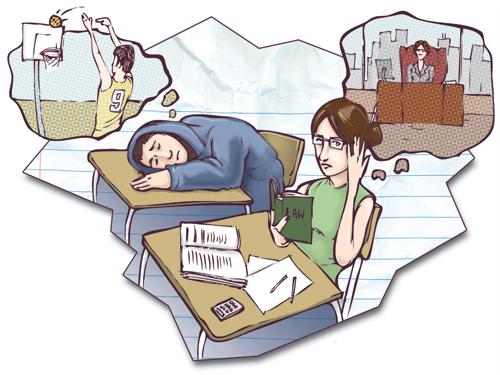Study finds female students in colleges outnumber males – but why?

ME Online
Feb 15, 2007
Last updated on May 12, 2016 at 08:01 a.m.
According to The Chronicle of Higher Education, the number of women enrolling in higher education is greater than the number of men. What remains a secret, however, is the reason why this gender gap exists.
“‘Why’ is the $64,000 question,” said Jacqueline King, director of the Center for Policy Analysis at the American Council on Education. “There’s not a lot of research that tells us exactly why this is happening.”
In a report titled “Gender Equity in Higher Education: 2006,” King names three prevalent theories surrounding this gender-based phenomenon: an economic explanation, the “school experiences” theory and the “social reasons” theory.
The economic explanation proposes that low returns on high school diplomas provide “a special incentive (for women) to go to college,” King said. In 2004, for example, 25- to 34-year-old women with only a high school diploma made an average of $24,000. Men in the same category made over $30,000.
Get The Daily Illini in your inbox!
The two remaining hypotheses are much less quantitative. The “school experiences” theory explains that boys are treated differently in class and that changing curriculums have placed more emphasis on skills like writing.
The “social reasons” theory speculates that role models like athletes and musicians influence males away from higher education.
Despite the popularity of these theories, King explained that proving any one of them would take a significant amount of time and effort.
“(The gender gap) is extremely complex,” she said. “(Accounting for it) would require a major research initiative.”
One person involved in such an initiative is Judith Kleinfeld, professor of psychology at the University of Alaska at Fairbanks. In January of 2006, she started The Boys Project, which works to help boys become successful. Kleinfeld specifically looks at the college gender gap.
To confront this issue, Kleinfeld went straight to the sources closest to the problem: students.
In interviewing students from Alaska, where the gender gap is large, she found evidence to support the “school experiences” theory.
“Many boys dislike the experience of school,” she said. “They associate (it) with suffering and boredom.”
Kleinfeld also discovered that men more often decide they can make good money without a college education, while women “see college as a path to the kind of life they want.”
Still, the gender gap is much more than a battle between boys and girls.
“It’s not a gender issue alone,” said Jasna Jovanovic, professor of psychology and child development at California Polytechnic State University. “We have to be careful to make statements like ‘all boys are in trouble.'”
Jovanovic stated that minority males are most at risk, which King addresses directly in her study. In addition, Jovanovic, King and Kleinfeld all explained that the male-to-female ratio is largely affected by a school’s selection of majors.
This fact helps to explain why enrollment at the University is 53 percent male, while the average public doctoral institution is 54 percent female.
Last semester, just 712 of 5,013 engineering majors were female, which amounts to about 14 percent. This number falls almost five percentage points below the national average.
“The degree mix at an institution will definitely make a difference,” King said. “(Majors like) engineering and physical sciences … are still large majority-male fields.”





